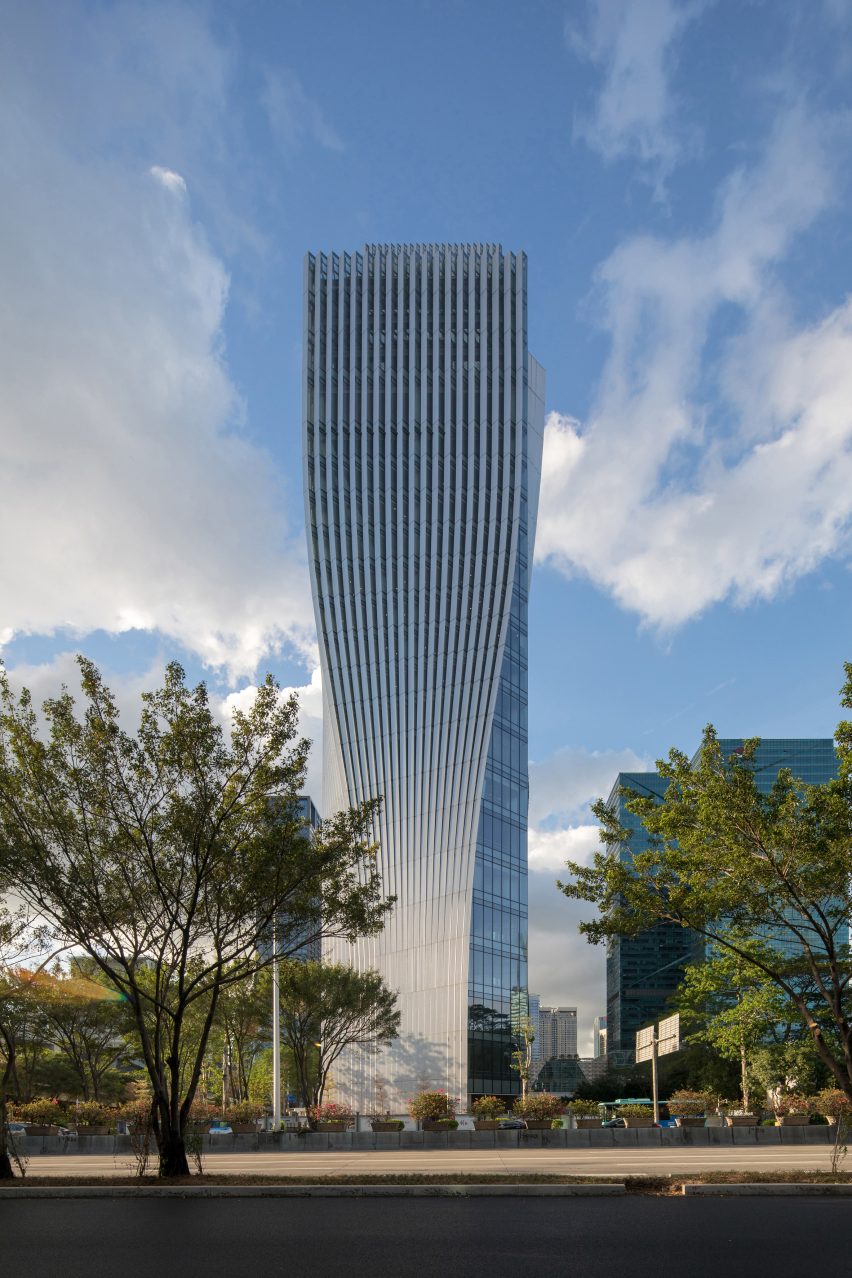
Chinese architects facing nightmare working conditions amid real-estate crisis
Chinese architects have told Dezeen they are regularly working through the night while their pay plummets as the country's property industry deals with a severe crisis.
Dezeen has spoken to more than 10 architects based in Beijing, Shanghai, Guangzhou and Shenzhen who reported widespread layoffs, pay cuts and wage arrears in the industry in the past year.
"You are having a good day if you leave work before 10pm," said Shuchun Yi (not her real name), a young architect and a former employee of state-owned firm Shenzhen General Institute of Architecture Design & Research (SZAD).
"I know some of my colleagues have worked until 3:00am consecutively for three months," she added.
Yi no longer works at SZAD but was too scared to reveal her identity when speaking with Dezeen for fear of consequences when trying to find another job.
Spiralling developer debt and stalling projects
After a long period of booming urban development, China's property industry is in turmoil, with developers struggling under spiralling debt and construction projects grinding to a halt.
The crisis is having a major impact on architecture firms, with once-reliable clients no longer commissioning projects.
Among 13 publicly listed architecture firms in China, only one saw revenue growth in the 2022 financial year.
The other 12 all had significant revenue dips, with Shanghai HYP-ARCH Architectural Design Consultant the worst performing, its turnover falling by 60.7 per cent.
One US-based architecture firm with a Shanghai office told Dezeen they have reduced the team's headcount from around 100 to 30 due to a lack of projects.
Another overseas firm with an office in Shanghai admitted that falling revenues have caused it to curb recruitment, meaning existing staff are having to work longer hours.

The story of SZAD serves as a useful illustration of the issues facing architecture studios in China.
Founded in 1982, SZAD has offices across the country, including in Shenzhen, Beijing, Chongqing and Wuhan.
Known for designing supertall buildings, it employed almost 3,700 people at its peak five years ago following a strong period of growth driven by China's real-estate boom.
As China impressed the world with its unprecedented speed of urbanisation, developers demanded faster and faster design and construction times so they could quickly move on to the next project.
In 2013, SZAD signed a long-term strategic partnership with giant Chinese developer Evergrande that led to numerous large projects.
"The majority of the projects were residential and formulated, with architects only required to do minor tweaking on each project based on the standard structure that the client supplied," said Xue Wei, another former SZAD employee (also not his real name).
"Normally it takes between 45 days to 60 days to finish a complete project drawing, but SZAD was able to reduce that time to 25 days," he added.
"Sometimes, SZAD was even able to deliver a partial drawing of the project in two or three days to help the client speed up the construction."
Wei claims he and his colleagues were regularly working overnight and rarely had weekend breaks to accommodate the demand for speed.
The obsession with quickly turning around projects resulted in architecture firms fighting to land new projects for lower fees or sometimes even risk not getting paid at all.
Architects' pay based on bonuses
"Sometimes the project had already been delivered but the contract was never signed," said Wei. "It would then be very difficult to get paid."
Chinese magazine LifeWeek has previously reported similar issues at another state-owned architecture firm based in eastern China.
Employees would have to share the risks as well, as most large Chinese architecture firms use an unusual salary structure in which the contracted salary is set at minimum wage with the majority of income paid in project-related bonuses.
That means if the firm does not get paid for the project by the client, no relevant bonus is paid to the employee architects.
Many architects agreed to such payment arrangements without concern, because there was a consensus that the real-estate market would continue to boom and that the projects would keep coming.

Then, in 2021, Evergrande dropped a bombshell. Once China's top property developer, it was found to be struggling with more than $300 billion in liabilities, triggering the industry's debt crisis which now accounts for 40 per cent of defaulted home sales in China.
In July, Evergrande posted a combined loss of $81 billion for 2021 and 2022 that sent the market into further panic. Last month, it filed for bankruptcy protection in a US court.
When the reality hit that debts have spun out of control among top Chinese property developers, architecture firms that had locked in their interests with these companies were plunged into difficulty.
As the former strategic partner of Evergrande, SZAD has suffered heavily as a result of the developer's financial woes.
Having expected to earn a good living at SZAD, Yi claims she ended up taking home pay equivalent to Shenzhen's minimum wage.
"HR promised I'd get paid bonuses quarterly and annually but it never happened," she said.
On 6 July, 44-year-old Hui Jin fell to his death from the window of the 21st floor of Design Tower in Shenzhen, where SZAD's offices are located and where he had previously worked as a senior structural engineer. A police investigation ruled out homicide.
The environment department in which Jin worked has completed landmark projects such as Shenzhen Energy Mansion, in collaboration with Danish architecture firm BIG, and Shenzhen Stock Exchange, in collaboration with Dutch studio OMA.
The number of staff in the department has halved from 600 in 2018 to 300 now. Jin joined in 2018 and left the company in March this year.
Chinese publication The Paper reported that Jin had been repeatedly chasing wages that SZAD owed him since his departure from the company, according to text communications between Jin and SZAD's finance department revealed by Jin's surviving family.
SZAD has denied any financial dispute in a statement. Jin's bank account reportedly received a payment of more than 40,000 yuan the day after his death, accompanied with the description "bonus for 2021".
Firms chasing limited projects
The problems are not unique to SZAD. Chinese website Jiemian News reported that architects at a local firm in Shenzhen have seen their wages half since 2019 as a result of evaporating bonus pay.
And there is currently no end in sight for the industry's troubles, with architecture firms now struggling to compete for a dwindling number of projects at lower fees.
"Previously you normally saw three to five companies in the competition, but now there are over 20 companies in one competition," one architect told Jiemian News.
"But that's common in the industry, because there are too many people and not enough projects."
Dezeen put all the claims in this story to SZAD but did not receive a response.
If you have been affected by any of the details in this story, support hotlines are available here.
Dezeen In Depth
If you enjoy reading Dezeen's interviews, opinions and features, subscribe to Dezeen In Depth. Sent on the last Friday of each month, this newsletter provides a single place to read about the design and architecture stories behind the headlines.